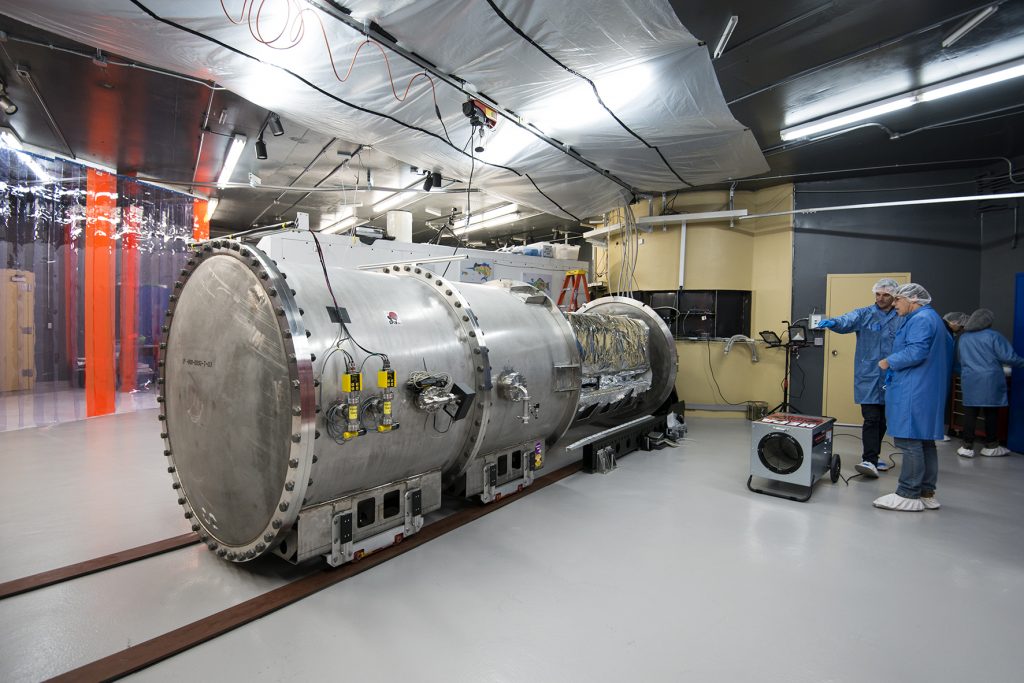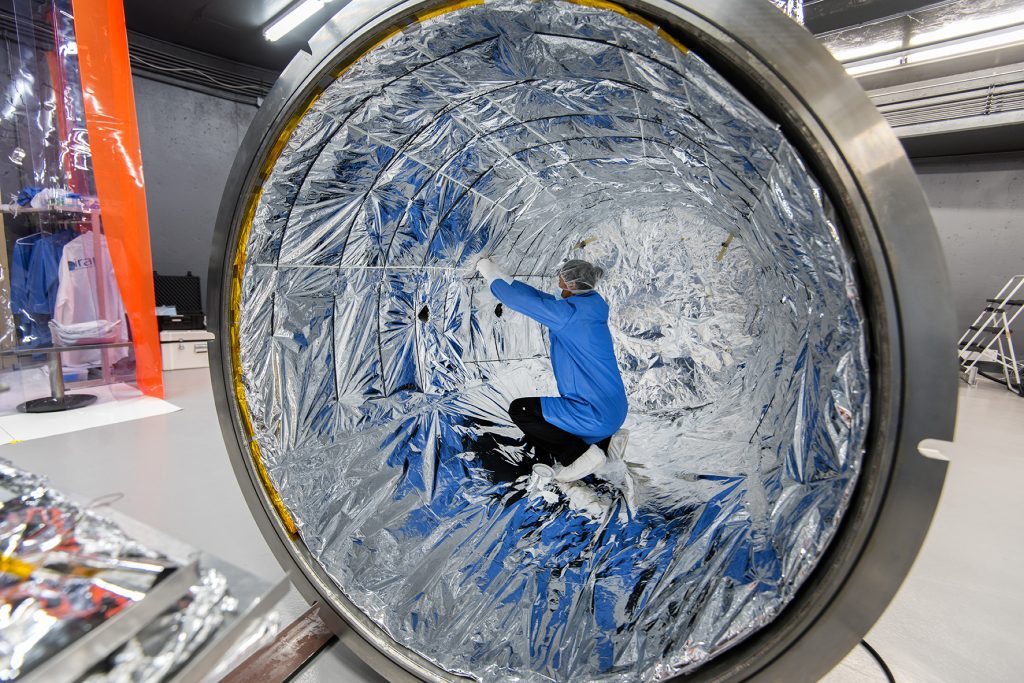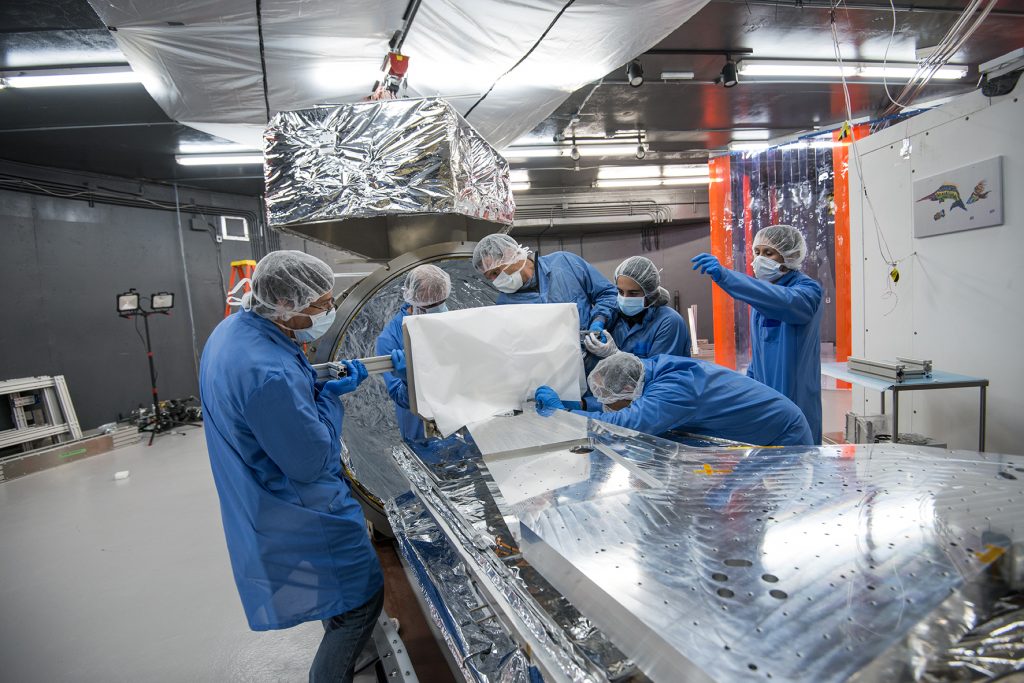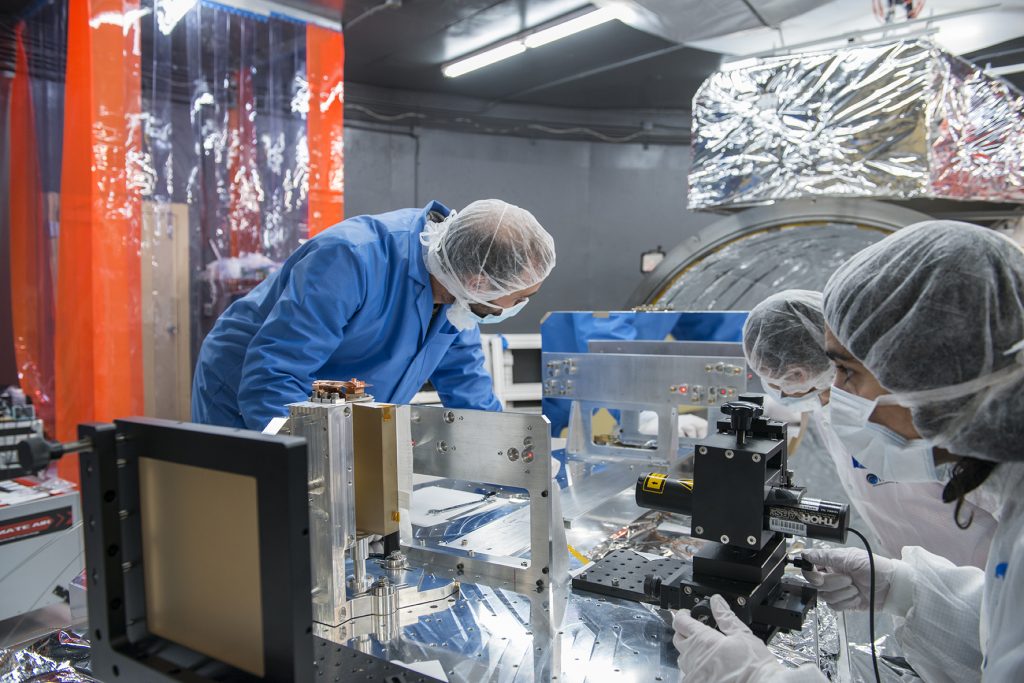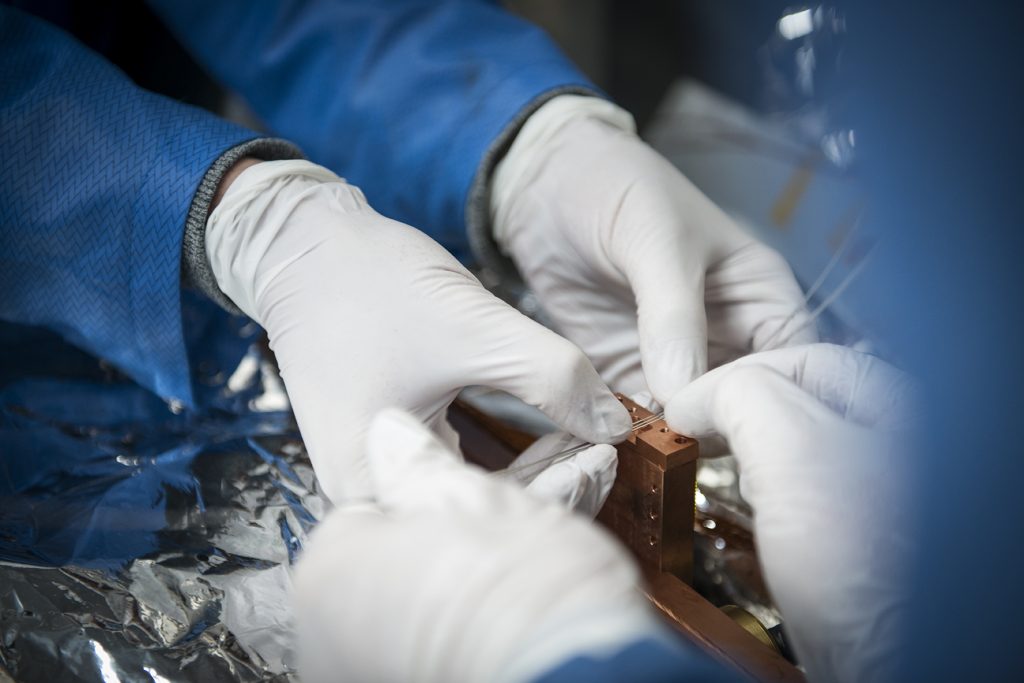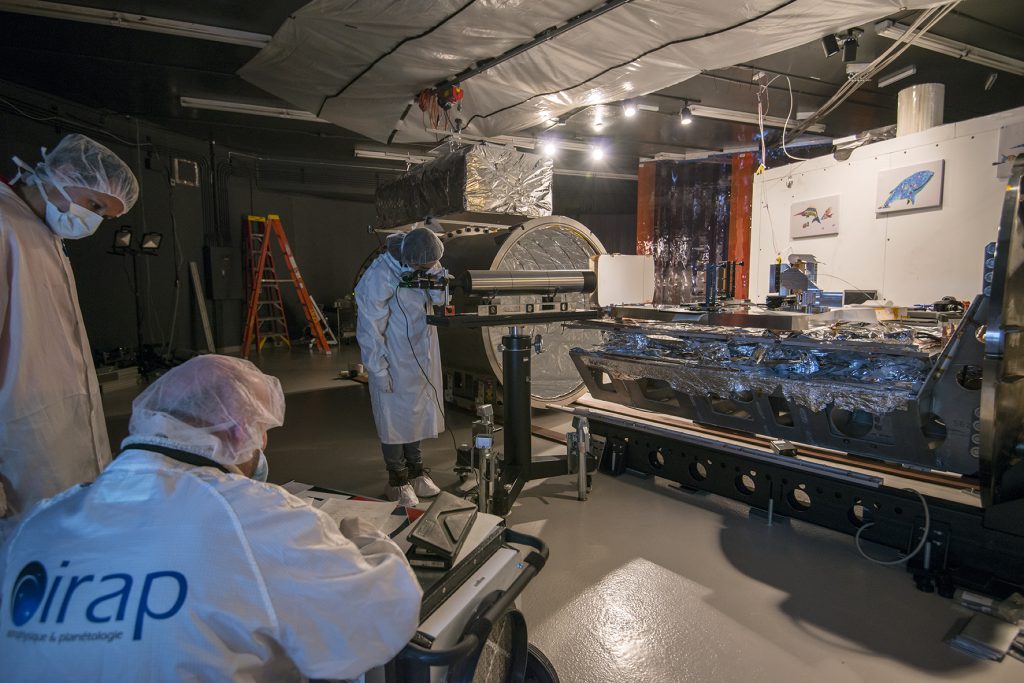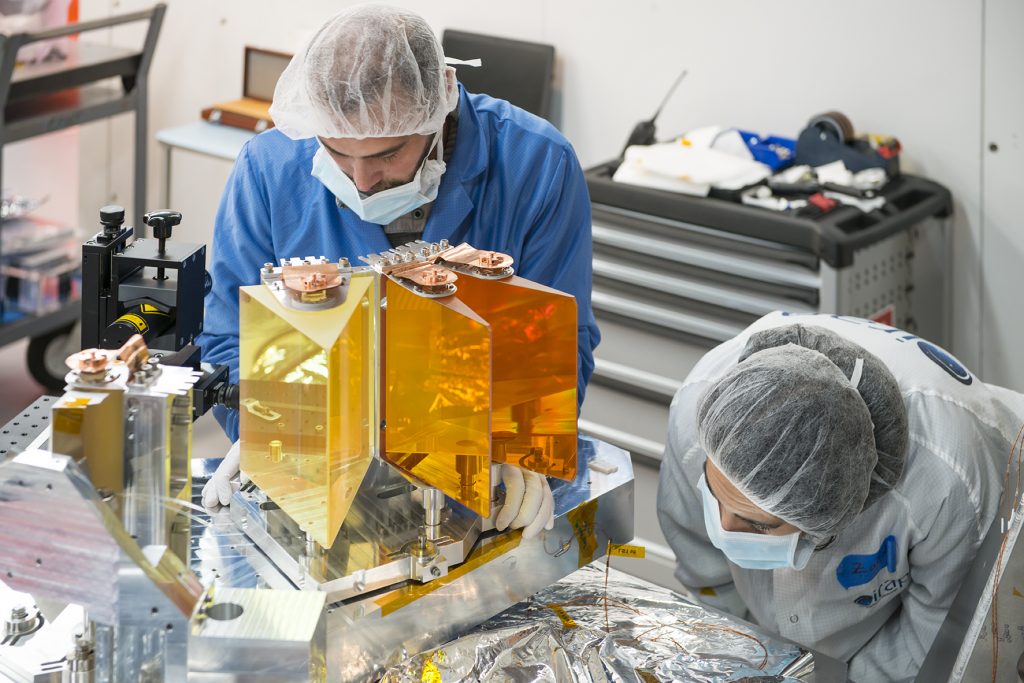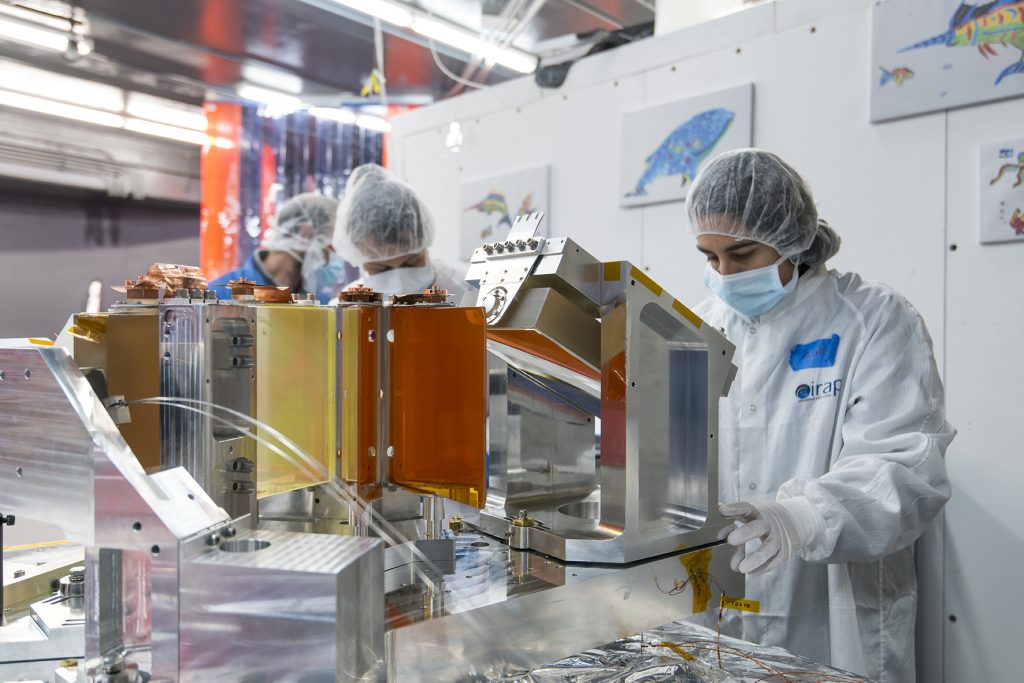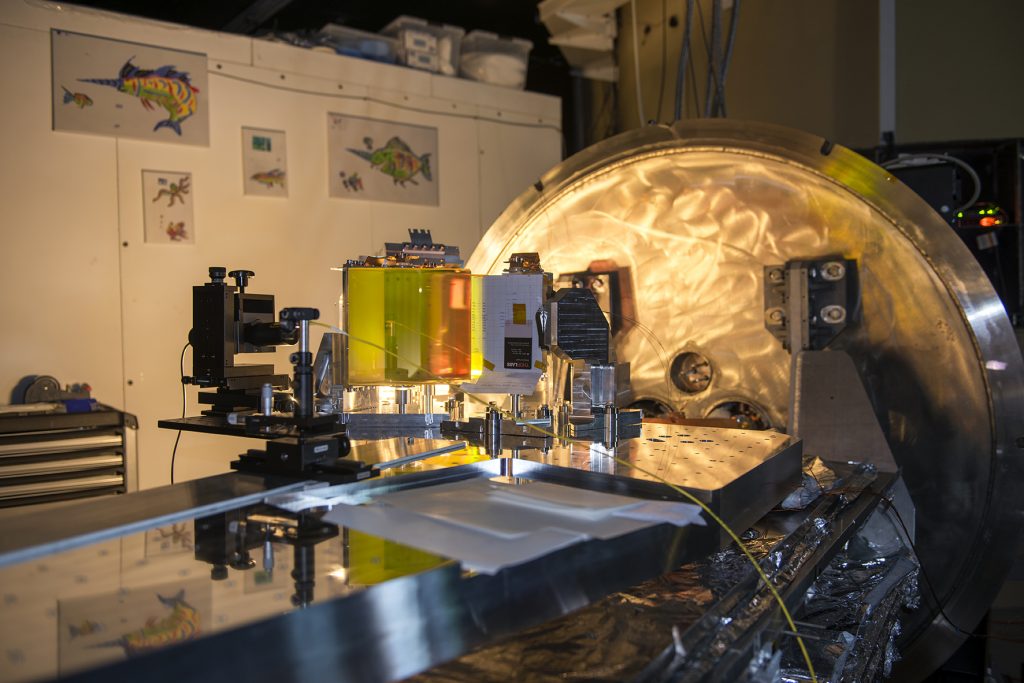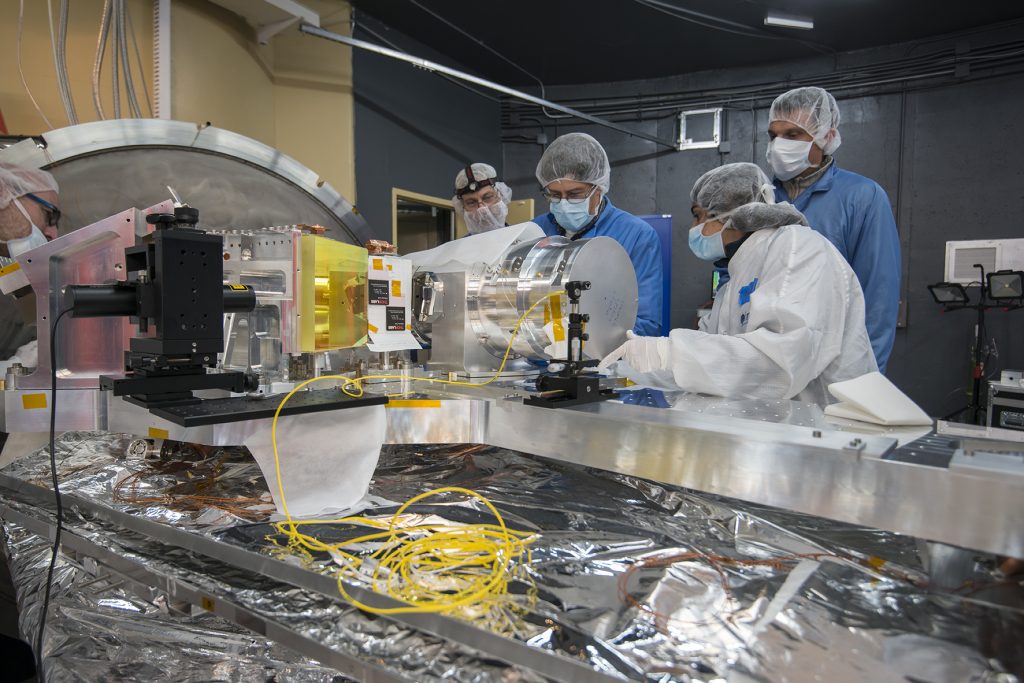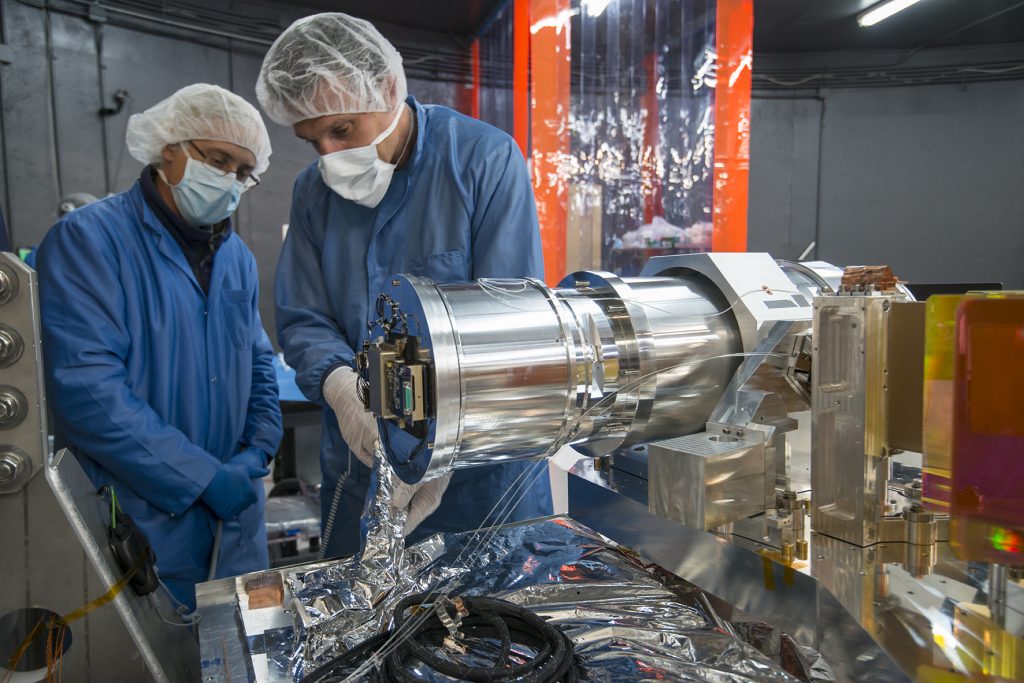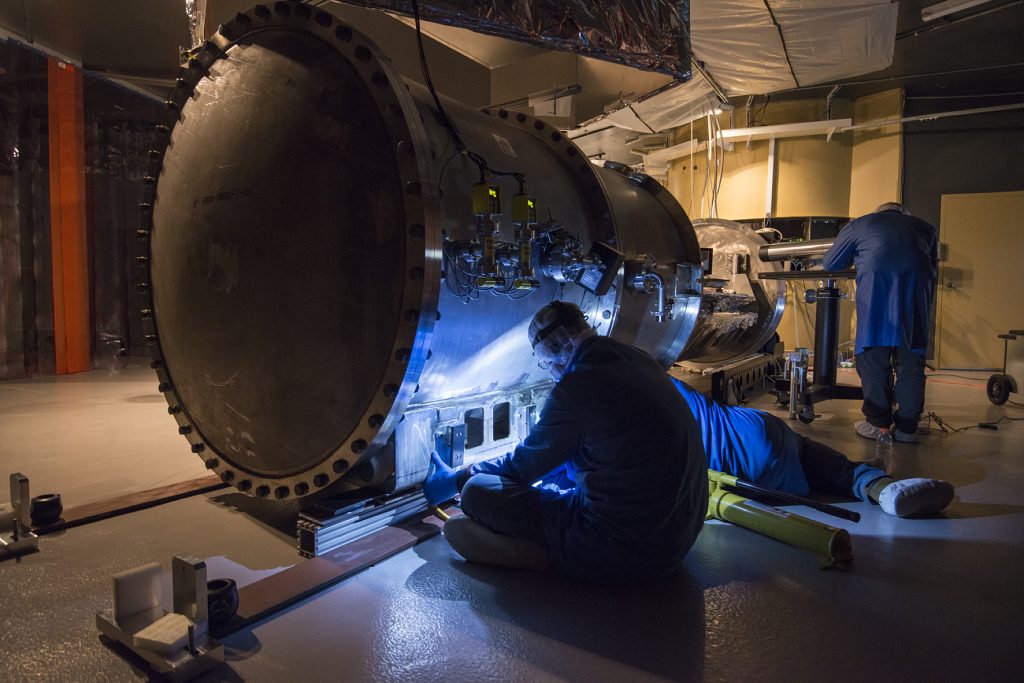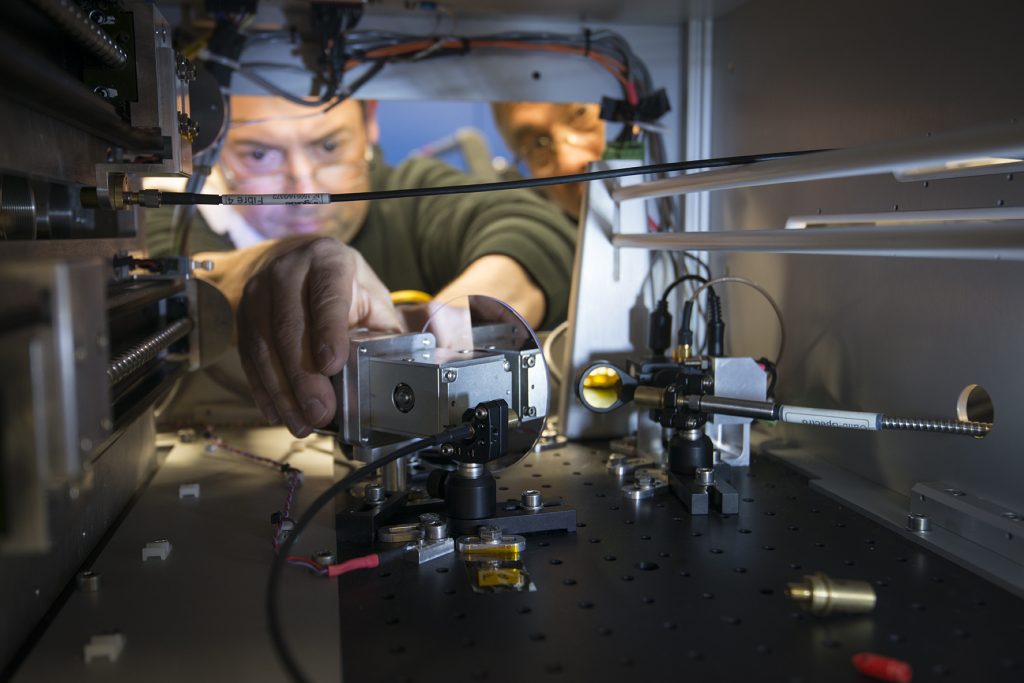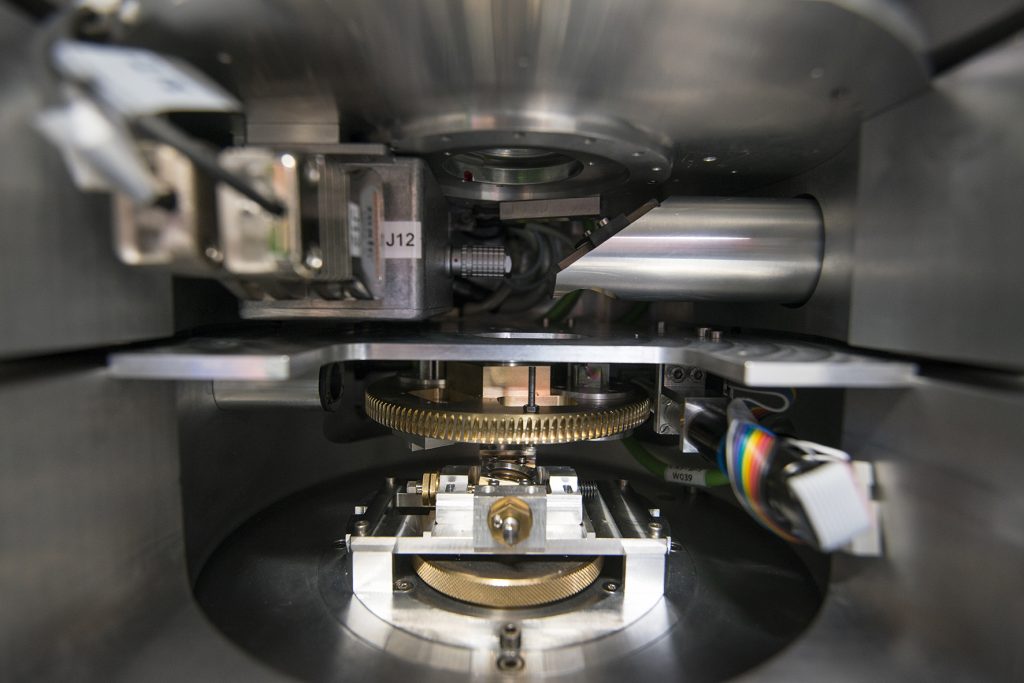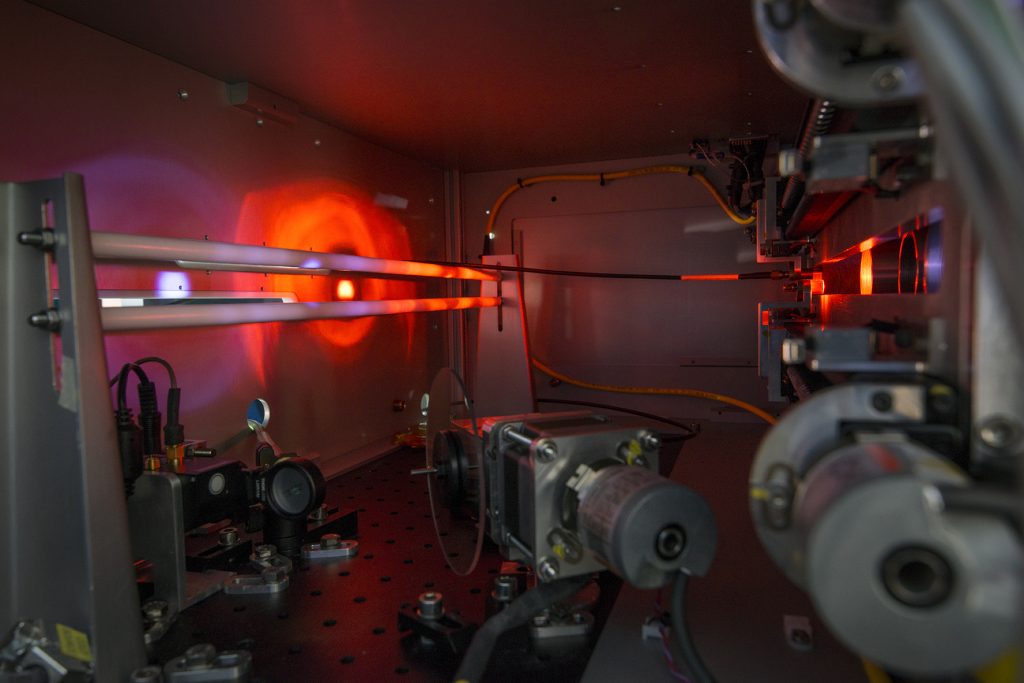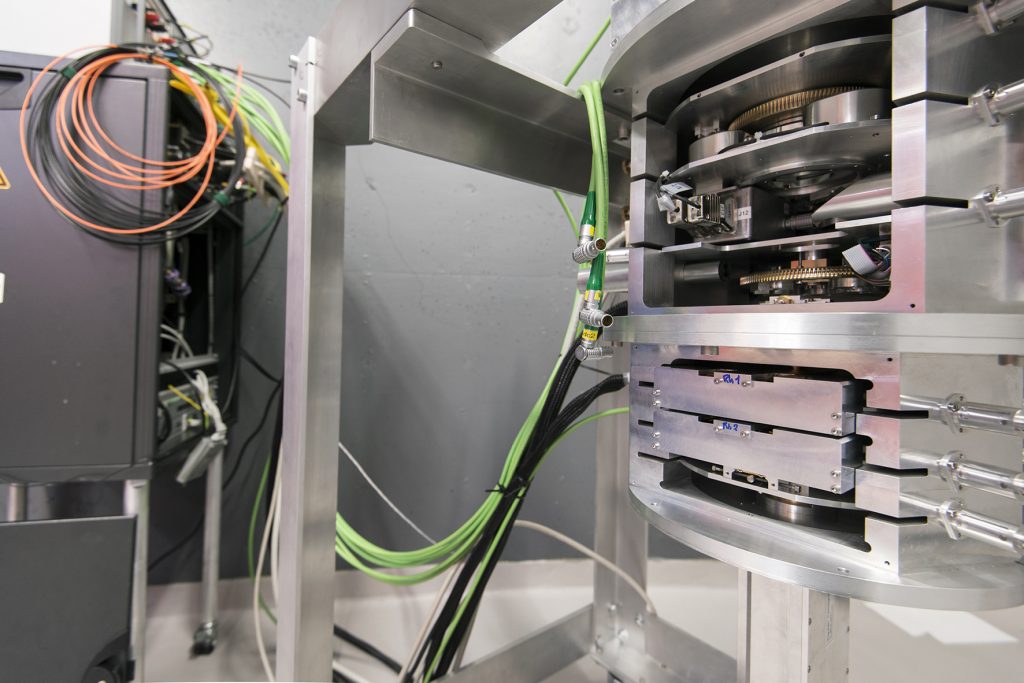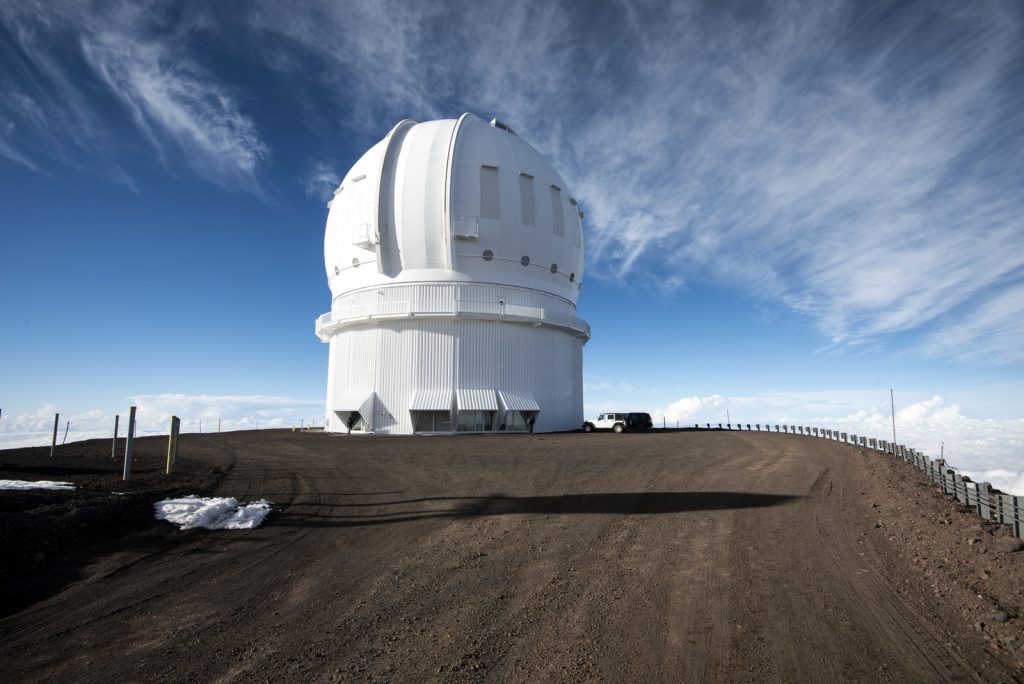2018 February: SPIRou comes back to life
The whole instrument is integrated at CFHT
Following the delivery of all 13 SPIRou crates at CFHT on the Maunakea summit (the last load arriving on Jan 30), integration of the various SPIRou subsystems began straight away. With the extremely helpful and dedicated contribution of the CFHT team, the SPIRou teams from IRAP / OMP and NRC-H present on site started working in parallel on the main instrument modules in order to catch up on the travel delays and ensure a fast and efficient path to a working system. The SPIRou cryostat was assembled and ready for a first successful vacuum test on Feb 3, whereas the Cassegrain unit and attendant control electronics were put together and checked for nominal behavior.
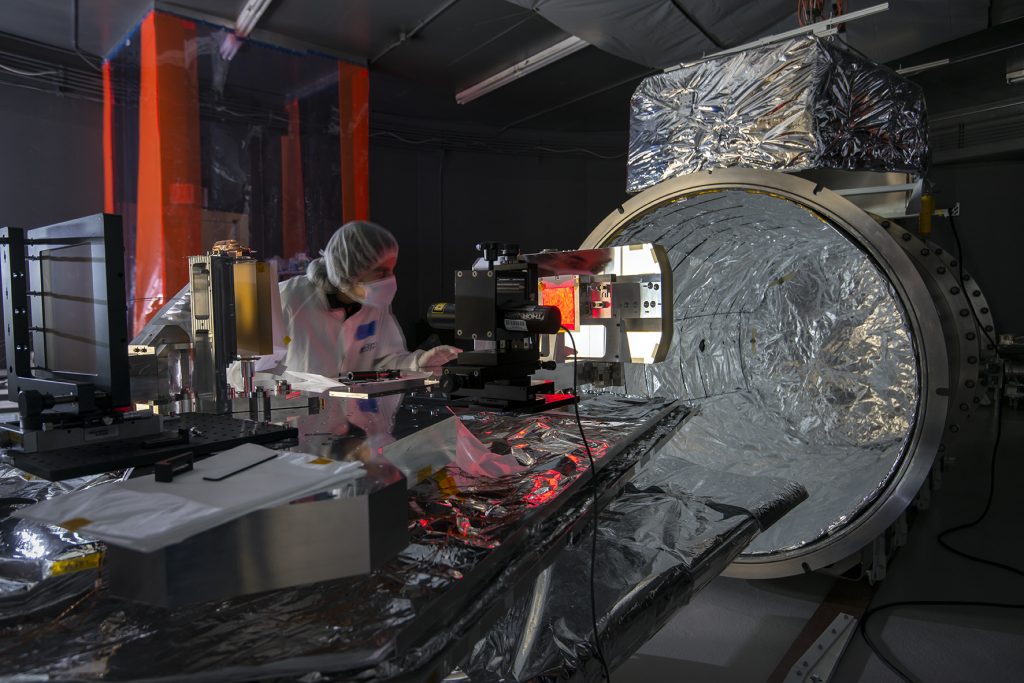
Optical alignement of the spectrograph and Cassegrain unit followed from Feb 5 to Feb 15, with the polarimeter now equipped with new optics offering improved performances. Alignement procedures devised at IRAP / OMP proved quite useful and efficient at bringing back all spectrograph optics at their optimal positions, despite the tough working conditions at an altitude of 4200 m. Last but not least, the OHP team arrived on Feb 12 to integrate the SPIRou calibration unit, completing the set of sophisticated equipment that SPIRou needs to carry out its ambitious science programmes.
The first cryogenic cycle is currently planned to start on Feb 17 in a configuration identical to that used at IRAP / OMP, featuring in particular a 4M-pixel engineering H2RG detector. More tests with SPIRou are planned in the forthcoming weeks to demonstrate that the performances of the reassembled instrument are nominal. Following this verification step, SPIRou will be equipped with its brand new 16M-pixel science H4RG detector, currently being integrated on its focal plane array by the SPIRou team at Université de Montréal and to be delivered at CFHT by mid March. Stay tuned for the SPIRou first light on sky, expected to occur soon afterwards!
Special thanks to the whole CFHT team for their friendly welcome and implication throughout the integration steps, in particular Greg Barrick, Tom Benedict, Kevin Ho, Marc Baril, Greg Green and Tom Vermeulen.
